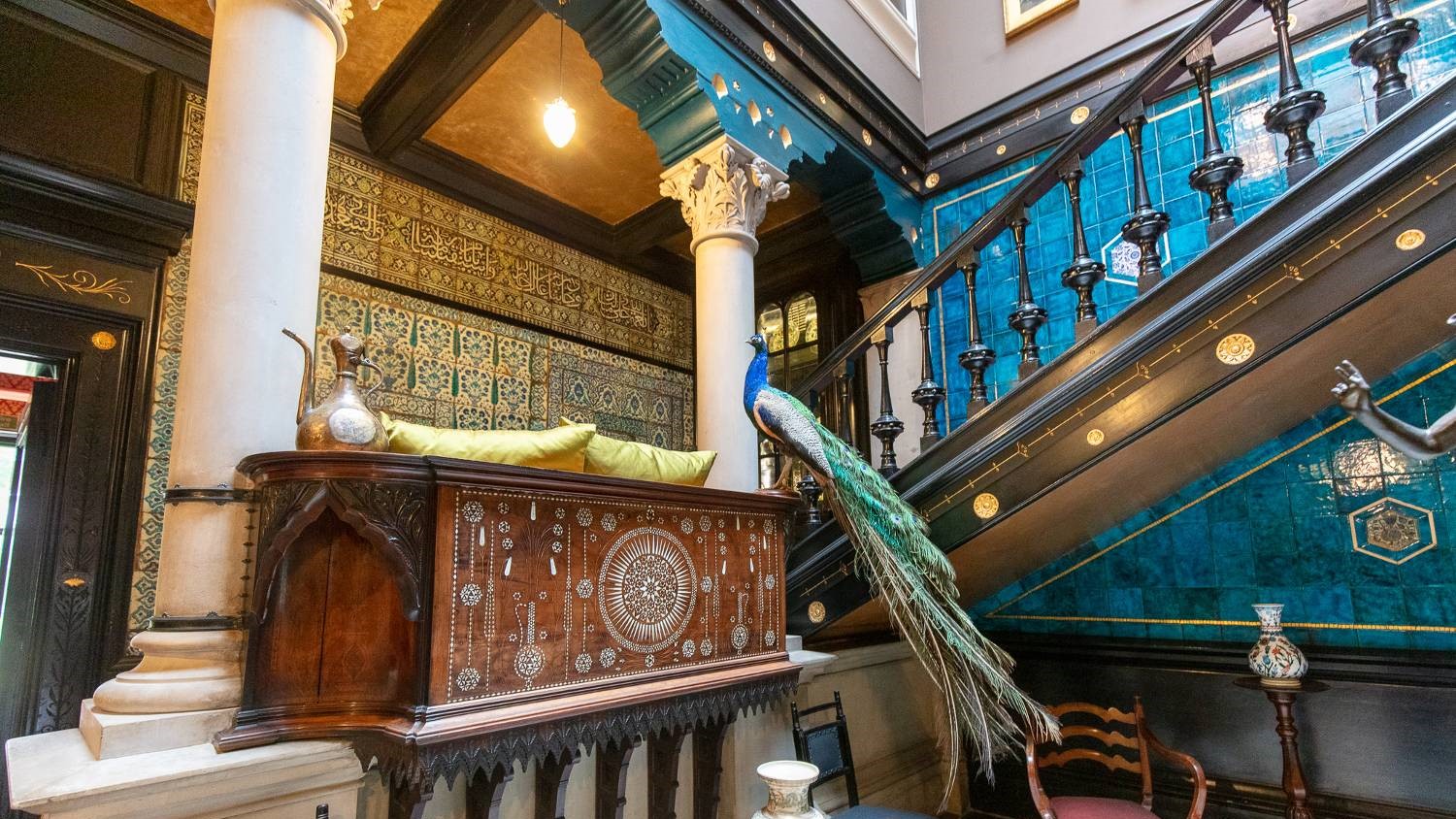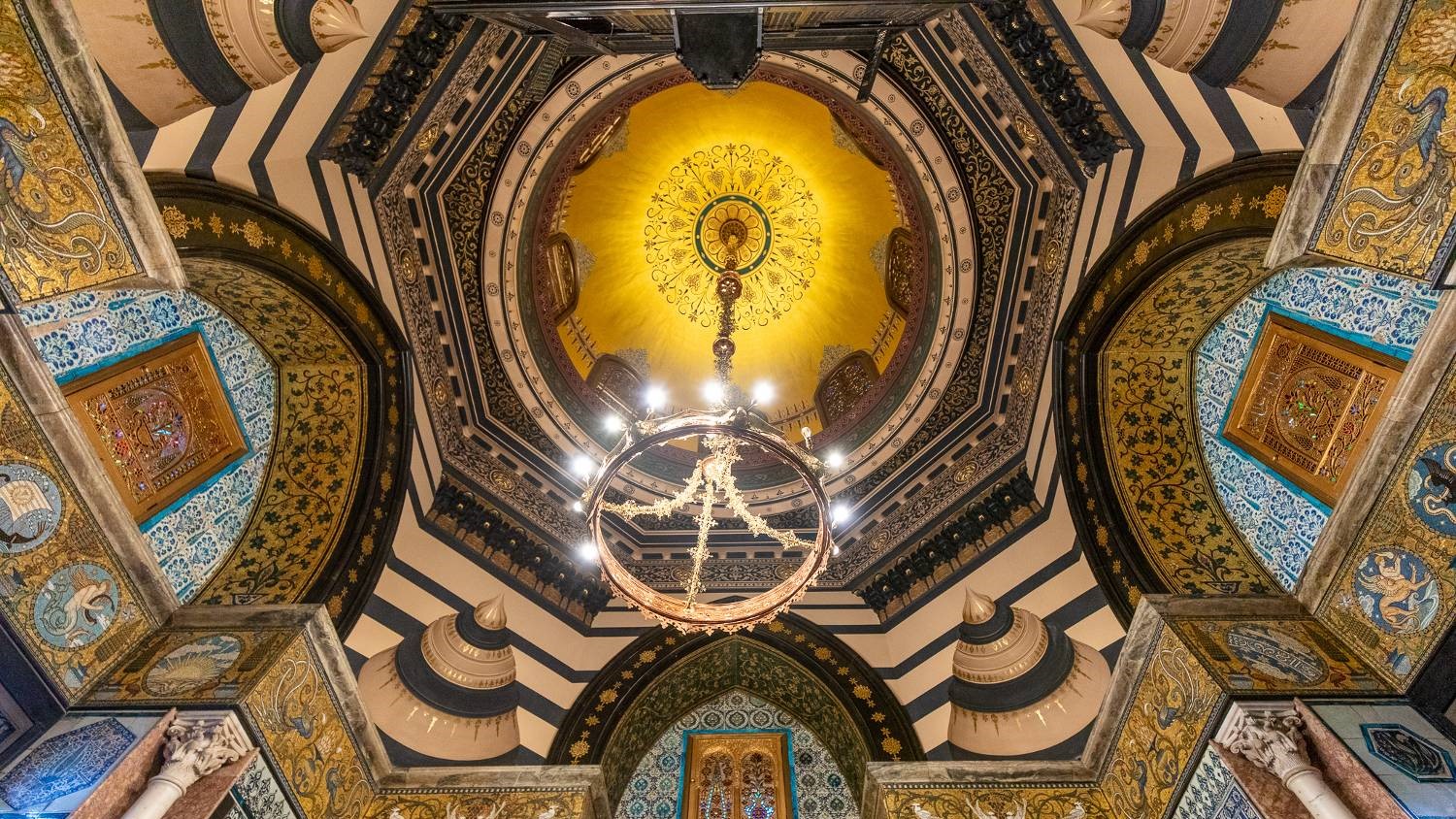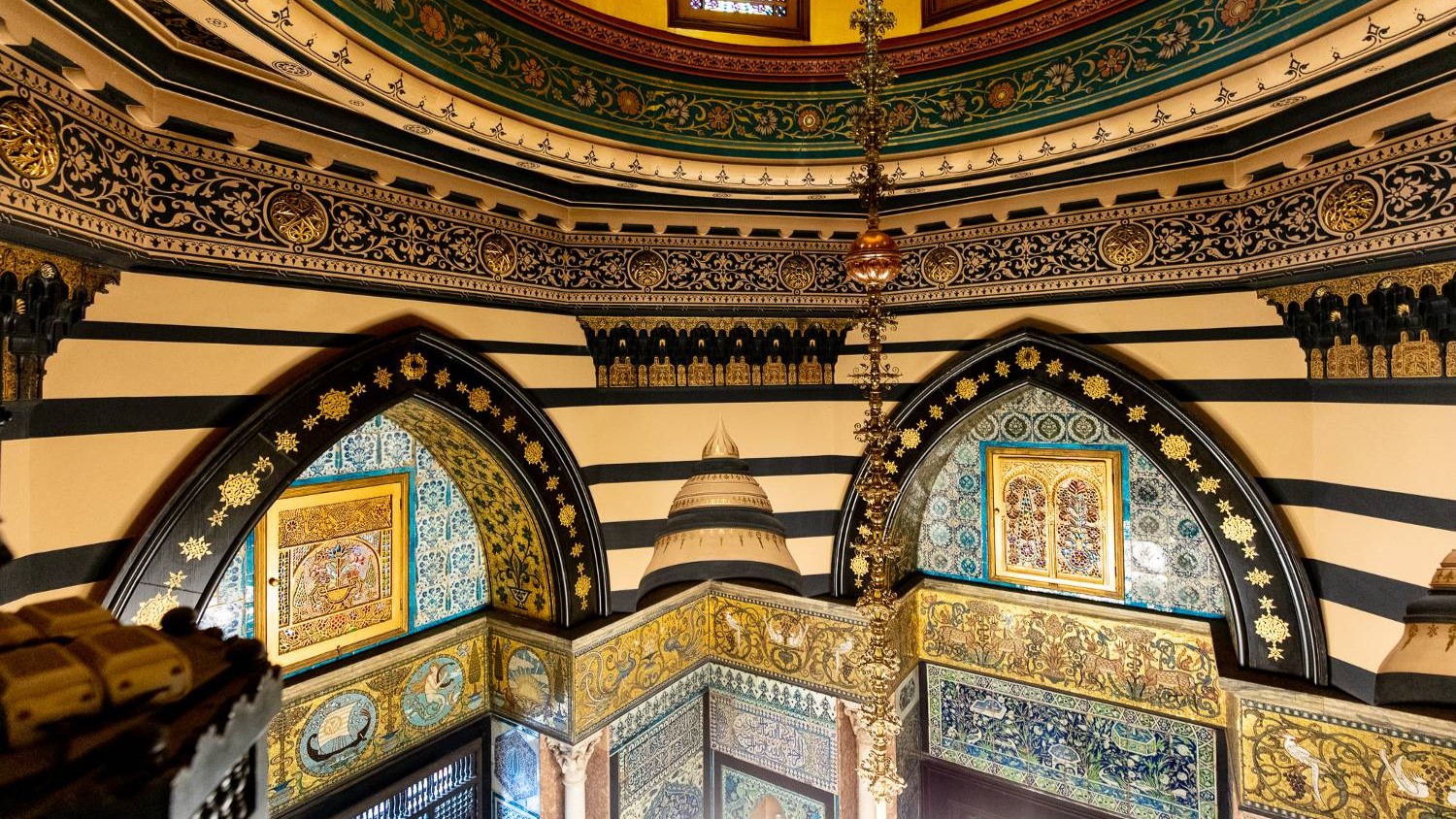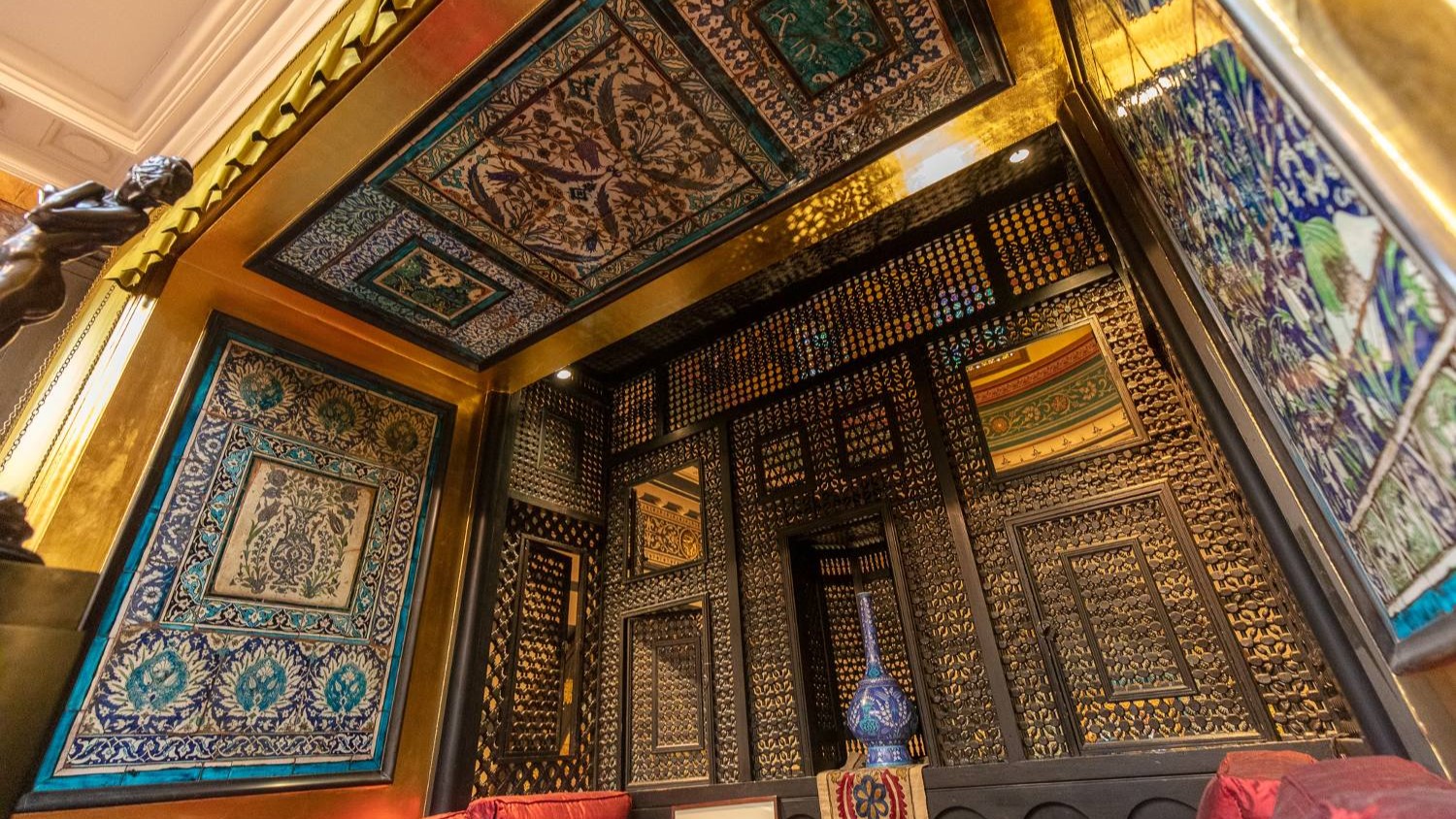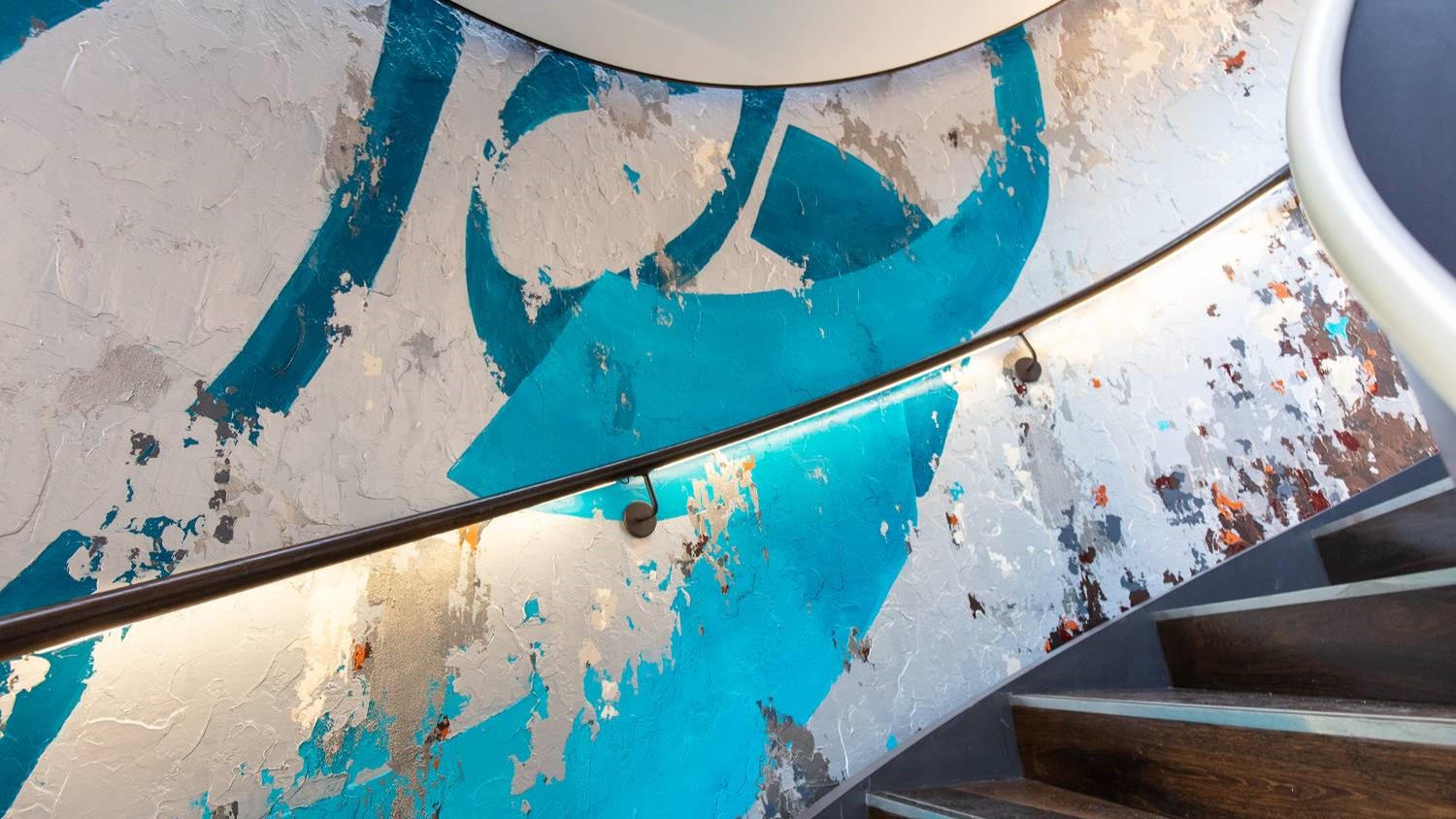Leighton House: A Middle Eastern escape in the heart of London
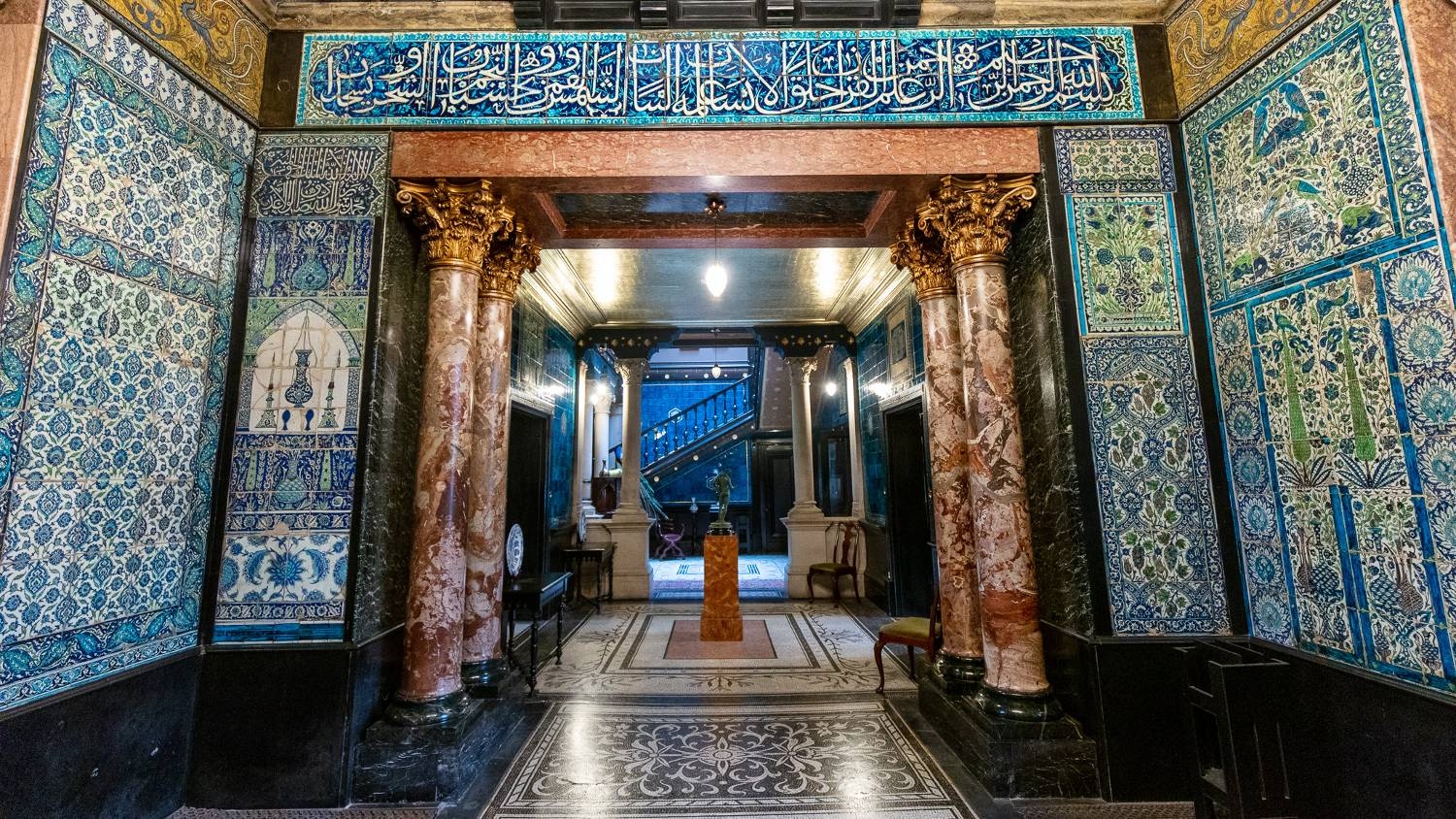
You might not notice anything different walking past 12 Holland Park in London, except maybe the small blue plaque on the wall that reads "Lord Leighton 1830-1896 Painter lived and died here".
The blue plaque scheme, run by English Heritage, is commonly used across England to commemorate those who made a significant contribution to England and the homes they lived in.
Nevertheless, you would be forgiven for not paying further attention, after all this area of London, known as the Holland Park Circle, is home to many grand houses belonging to famous Victorian-era artists.
What makes this house noteworthy is to be found not on the outside, but the inside.
Completed in stages between 1866 and 1895, it is the residence and studio of the artist Sir Frederic Leighton, and reflects his vast vision and interests.
Stay informed with MEE's newsletters
Sign up to get the latest alerts, insights and analysis, starting with Turkey Unpacked
The main attraction of the house, which is now a museum, is the Arab Hall, a room without a rival in the country and the most expensive addition to the house.
It contains hundreds of original elements sourced from Damascus, Istanbul and Cairo, dating from the 16th to the 18th centuries, with some possibly even older.
European orientalists
The main focus of Leighton's artistic career was Greek mythology and imagery from the Old Testament, with occasional paintings inspired by his contemporary Victorian context.
As a result of that specialisation, it has been hard to discern the reasons for his keen interest in Middle Eastern architecture.
Was Leighton simply following in the footsteps of other European orientalist artists who were making the journey to the "Near East" to see the Orient for themselves, and perhaps find some inspiration? Leighton did indeed travel to Algeria, Rhodes, Egypt, Syria and Turkey.
On returning he is noted to have simply said: “I have loved ‘the East’, as it is called, ever since.” Leighton wasn’t the only English artist to have fallen in love with "the East", though he’s one of the few who actually made the journey.
William Morris, Philip Webb, John Henry Dearle and Emery Walker were figureheads in the British arts and crafts movement who collected objects from the Middle East (mostly Ottoman and Persian), and were considered experts in the field.
"To us pattern designers, Persia has become a holy land, for there in the process of time our art was perfected, and thence above all places, it spread to cover for a while the world, east and west," wrote William Morris in 1882, explaining this western interest in the Islamic world.
Whereas Morris and others used Islamic art as a source of inspiration for their own crafts, Leighton embellished his house with a mixture of original and some commissioned artwork.
Turkish tiles
Many of the floral tiles that decorate the centre panels date back to the 17th century and were most likely brought from Turkey.
These are of the typical Ottoman iznik variety: coloured with cobalt blue, coated in a colourless glaze and originating from the western Anatolian town of Iznik.
Used in mosques across Turkey, the tiles feature heavily in the Topkapi Palace in Istanbul, as well as in the old Ottoman part of the Masjid al-Nabwi (Prophet's Mosque) in Medina.
The two small iwans (halls) with seating (on either side of the centre iwan) are decorated with fine 17th century wooden lattice pieces from Damascus.
If the Arab hall was found in a typical Damascene house in Syria, it would be known as the qa’a (guest room), and in the centre wall there would be a vertical wall fountain feeding water to another fountain found in the centre of the room.
Instead at Leighton House, there is a dark wood cupboard, several centuries old, with decorated arched shelves and what appears to be Safavid-era glazed tiles (from the 15th or 16th century) framed at the top.
'This house is lit and manifested with joy to those who gaze upon it. Happiness and joy is written upon its doors, enter it with peace and safety'
- old Ottoman greeting
Scattered around the room are more iznik tiles containing Arabic script. The largest of these features a few verses from the Quran, namely the chapter titled "Ar-Rahman".
In another place, the tasmiyyah, or opening phrase of each chapter of the Quran is found, reading: "In the name of God, the Most Gracious, the Most Merciful."
Elsewhere, we find the phrase "I seek refuge in Allah from the cursed devil", and more interestingly "This house is lit and manifested with joy to those who gaze upon it. Happiness and joy is written upon its doors, enter it with peace and safety" - an old Ottoman greeting.
It is more than likely Leighton knew its meaning, and chose to use it, indicating a strong possibility he was also aware of the meaning of the other Quranic verses present in the room.
That said, the phenomenon of finding religious Islamic script in Christian European architecture, art and furnishing is not unusual.
Given the large volumes of trade between the Ottomans and Europe, especially Italy, items decorated with Quranic calligraphy entered Europe, often without knowledge of what the writing said.
In fact, some European artists went as far as even creating Arabic script (pseudo-Arabic) as they believed it beautified their work.
Near the top, approaching the inner dome, is the iconic ablaq pattern (the alternating black-and-white stripe) that circles the room, which was invented in Damascus and later spread across Mamluk Egypt and the Levant, and is often found in mosques, madrassas (religious schools) and medieval caravanserais in the Islamic world.
The room also has several Victorian elements, with some additions created locally by English artists. Such as the gold mosaic frieze designed by Walter Crane that imitates the mosaic art found in the Umayyad Mosque of Damascus.
'Something beautiful'
So what drove the artist to produce this wonder in central London; a gesture of respect for the Islamic world or to "own" a piece of the Near East?
In his own words Leighton said he had built the hall: "For the sake of looking at something beautiful every once in a while.”
It is said the room was used as a post-dinner smoking room for Leighton’s guests, thereby staying true to the spirit of the qa’a one finds in old Damascene houses.
The opulence of the room comes at a cost, the Arab Hall is the most expensive addition to the house, costing more than the original home. At £7,000 compared to £4,500 for the building prior to the renovations.
Comparisons with today's prices are misleading given the inflationary pressures on the London housing market but for some perspective, £7,000 in 1880 - around the period the house was built - amounts to around £470,000 today.
The Arab hall is not the only part of the house influenced by eastern architecture, other Islamic art elements are found across the house, most notably the central Narcissus hall, where more iznik tiles are found inserted between beautiful turquoise tiles created by fellow artist and Orientalist tile designer William De Morgan.
Directly above the Arab hall, one also finds a mashrabiya, an interior enclosed window carved with latticework.
Leighton acquired this from Cairo, where a mashrabiya would be used by the women of the house to socialise and enjoy privacy (they could look through the small lattice holes but not be seen in return).
It also served to ventilate and cool a space, blocking out hot air from outside by pushing any that enters through its top vent.
The feature was useful in the hot climate of the Middle East, whereas the mashrabiya would serve little functional purpose in Europe.
Victorian philosophy
Leighton’s home embodies the Victorian philosophy of how a great artist should live and Leighton was no ordinary artist.
Born into wealth (his father was the physician to the Imperial Russian royal family), Leighton moved in the highest of social circles, including the royal family, as well elite circles across Europe. In fact Leighton’s first finished piece was purchased by Queen Victoria in 1855, launching his career.
After being closed for several years, Leighton House was reopened on 15 October last year after the completion of major redevelopments.
These include a completely new transformed wing, with a new exhibition space and previously unseen historic features of the house on view for the very first time.
It features a series of commissions that connect the historic legacy of the house with the artists and craftsmanship from the Middle East and North Africa.
There is also a suite of specially commissioned furniture handmade by Syrian artisans based in Amman, Jordan. A beautiful homage to the heavy Syrian influence and legacy of Leighton House.
A new Rotunda extension includes the first permanent contemporary artwork at the museum. Titled Oneness, this 11-metre-high mural is hand painted by the Iranian artist Shahrzad Ghaffari and encircles the curved walls of a new helical staircase across three floors.
The mural is inspired by the poem Who am I penned by the 13th century poet Jalal ad-Din Muhammad Rumi, which talks about the oneness and unity of God.
So if you’re in London, and want to see how a Victorian artist with a passion for Islamic art and architecture lived, Leighton House should be at the top of your list.
To find out more about visiting times to Leighton House: https://www.rbkc.gov.uk/museums/history-leighton-house
Middle East Eye delivers independent and unrivalled coverage and analysis of the Middle East, North Africa and beyond. To learn more about republishing this content and the associated fees, please fill out this form. More about MEE can be found here.


